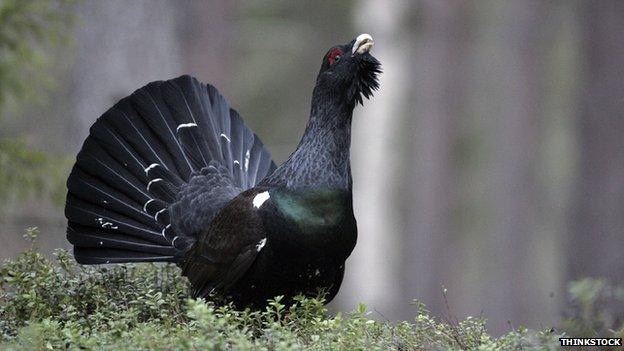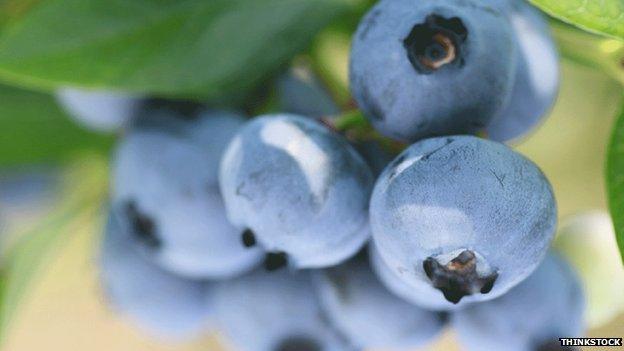Berries clue to boosting numbers of rare capercaillie
- Published

Numbers of capercaillie have been falling since the 1970s
Managing woodland in a way that boosts the quality of blaeberries could in turn help to better protect a rare bird, a new report suggests.
Scottish capercaillie have declined to as few as 1,000 individuals since the 1970s.
Adult birds and their chicks feed on blaeberry leaves and the insects the plants attract.
The new research suggests better quality blaeberries are found where trees have been thinned out.
The study published by Scottish Natural Heritage (SNH) said it was likely that in these areas the plants benefitted from an increase in sunlight and also nutrients from cut branches left to rot on the forest floor.
More research would be needed to better understand how woodland management could aid this process, the report has recommended.

Blaeberries are thought to improve in quality where trees have been thinned out
Scientists examined woodland in Strathspey in the Cairngorms National Park where 75% of Scotland's capercaillie are found.
The species of grouse have suffered serious decline because of habitat loss, wet summers and adult birds dying in collisions with deer fencing at commercial forests.
Sue Haysom of SNH said: "This report improves our understanding of the complex relationships between weather, habitat, predators and capercaillie breeding success and how these factors vary across key woods in Strathspey."
RSPB Scotland's Ron Summers said: "This study of data amassed over 10 years has helped further our knowledge of the various factors that impact on capercaillie breeding success in Strathspey.
"As the last stronghold for capercaillie in the UK, we need to understand why their productivity varies significantly and so markedly across this area."
He added: "Capercaillie numbers have decreased rapidly since the 1970s and this report will help inform our future conservation efforts to save these magnificent birds in Scotland."
Blaeberries have long been regarded as having benefits for human diets too.
Since the 14th Century they have been held up as a cure for kidney stones.
The leaves can be used to make tea, while a syrup made of the berries is said to relieve diarrhoea.